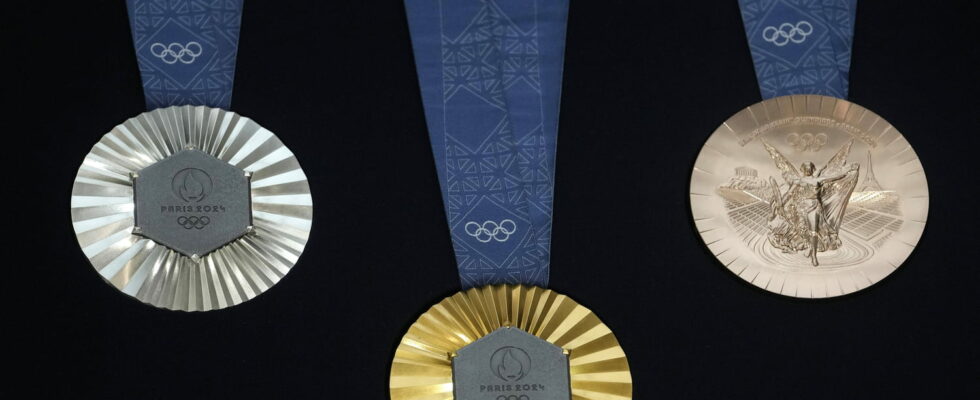5,084 medals will be awarded in Paris this summer for the Olympic Games, including more than 1,000 in gold. But these are not only made of the precious metal.
It is the Holy Grail for all athletes present at the Games, the goal of a lifetime: to win a medal at the Olympic Games, and even more so a gold medal. A total of 5,084 medals will be awarded in Paris during the Olympic and Paralympic Games.
Set with a piece of the Eiffel Tower in their center, the Paris 2024 medals were designed by the jewelry house Chomet. This iron hexagon is surrounded by a radiance struck in the metal, giving the medal relief. This design is shared by the Olympic and Paralympic medals, in the desire of the organization to bring the two events closer together.

Gold, silver and bronze, the medals reward the first, second and third place finishers in each event respectively. While the silver medal is made entirely of the famous metal, this is not the case for the bronze and gold. In fact, the bronze medal is actually made of red brass, i.e. 65% copper and 5% zinc.
As for the gold medal, it has only been made in solid gold once, during the Saint-Louis Games in 1904. Since then, silver gilt has been used for economic reasons. This alloy is in fact silver covered with gold leaf. Thus, the medals of the Paris Olympic Games are solid silver medals covered with six grams of gold. This technique greatly reduces the cost of each medal, around 690 euros according to current prices compared to more than 37,000 euros if they were made of solid gold.
In an ecological aspect, the medals have been made from electronic waste for several editions. From 30% of metal coming from recycling at the Rio Games in 2016, we went to almost 100% in Tokyo.
Since then, the IOC has set up a supply system guaranteeing that the gold and silver used to make the precious sesames. It was the Paris Mint that ensured the production of the 5,084 medals for these Paris Games, at the Hôtel de la Monnaie. The institution had already produced those for the 1924 Games.
